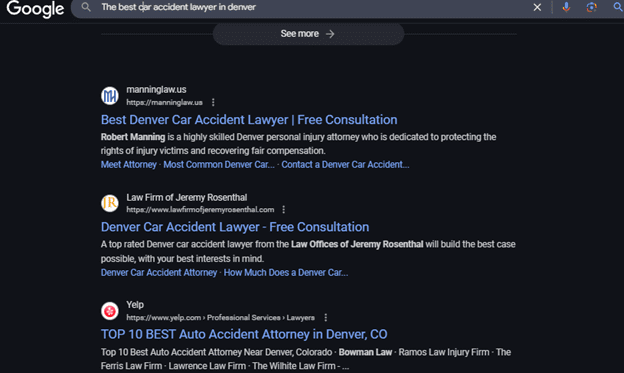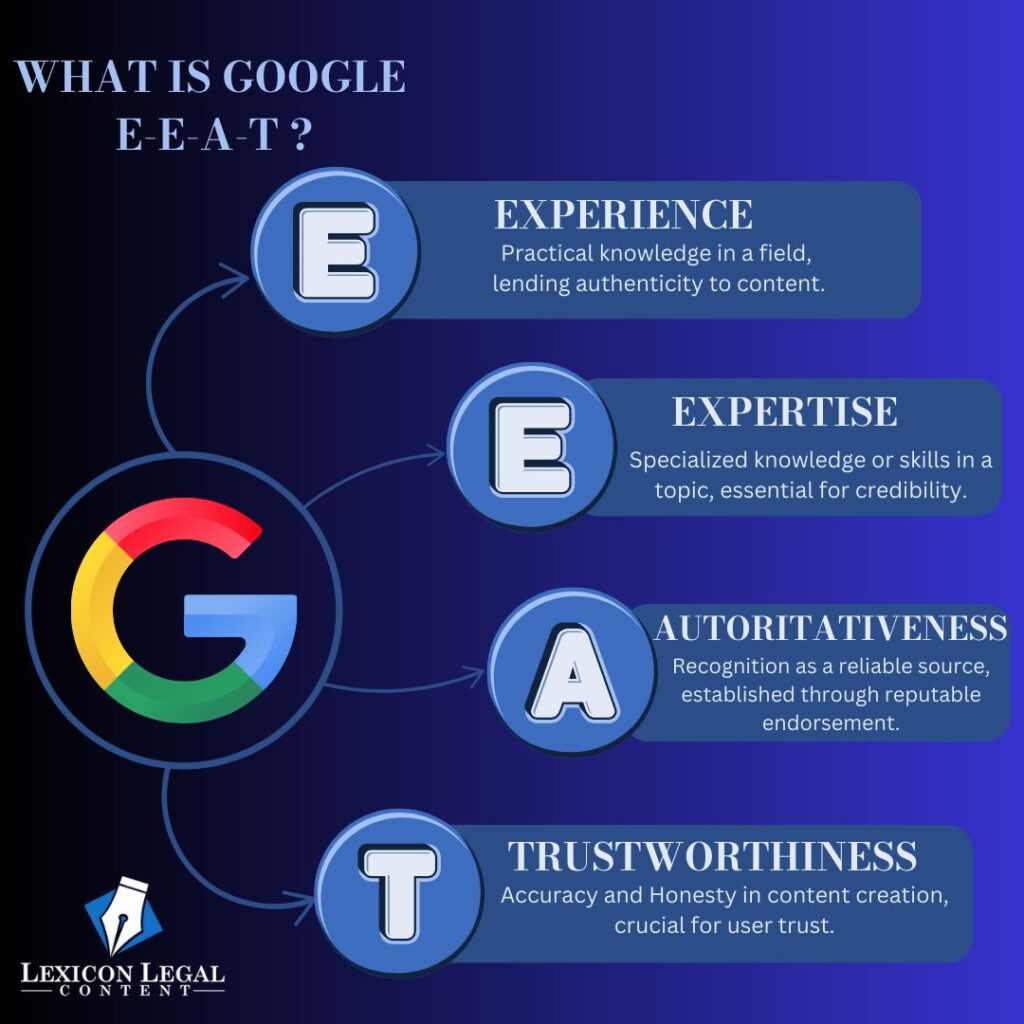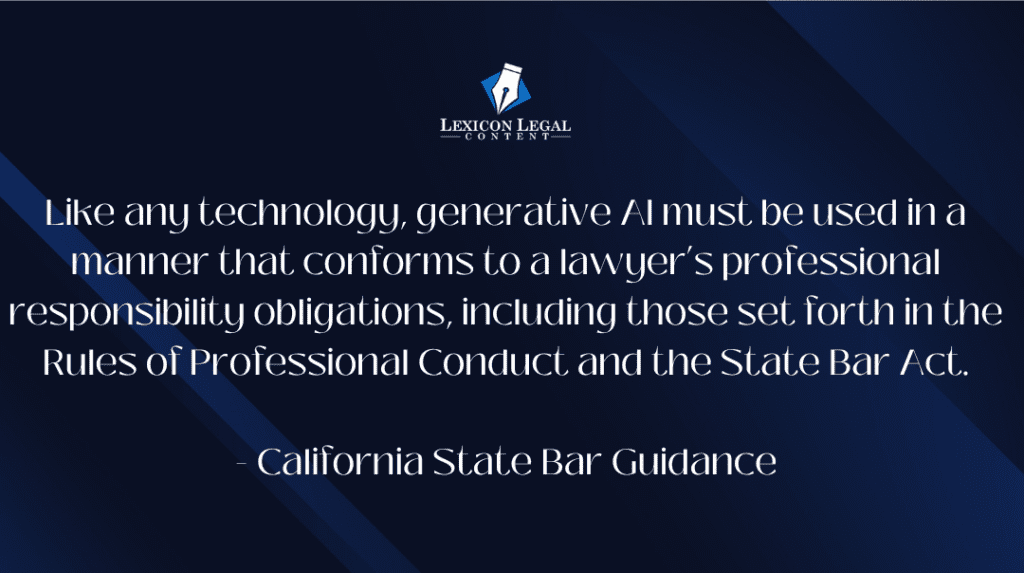The Legal Content Conundrum
Let’s be real: when your agency lands a law firm client, the excitement of a new account can quickly turn into a content creation nightmare. As someone with a foot in both worlds – having graduated from law school but making a career in legal content marketing – I’ve seen this scenario play out countless times.
Your writers, brilliant as they may be with most of your clients, suddenly hit a wall. That blog post about personal injury claims uses outdated statutes of limitations. The family law practice page accidentally implies guaranteed outcomes. And that estate planning guide? It’s technically accurate but reads like it was written for law school professors, not actual humans seeking help.
By the way, none of this is good – either for potential clients or SEO.
What began as a promising client relationship now has you scrambling to find specialized talent or spending late nights editing content you’re not entirely confident about.
But there’s a solution that more agencies are discovering: white-labeling legal content from specialists from niche content marketing agencies like Lexicon Legal Content.
Why Legal Content Requires Specialized Knowledge

Before diving into how white-labeling works, let’s acknowledge why legal content is uniquely challenging:
Compliance landmines are everywhere
While most states model their advertising rules on the ABA’s model rules. each state bar has specific regulations—what’s compliant in California might trigger ethics concerns in Florida. Getting it wrong doesn’t just mean unhappy clients; it potentially exposes your clients to regulatory issues. Some examples of content that may violate bar advertising rules include:
- Referring to an attorney as an “expert” or specialist”
- Using language that indicated a certain outcome was guaranteed or even likely
- Calling a firm or a lawyer “the best” in a given location
- Providing actionable legal advice
- Making misleading statements about a lawyer’s services or ability
In many cases, a generalist content creator may not even know that these are issues in legal content marketing. For this reason,it’s advisable for marketing agencies to seek out specialist legal content marketers as white label partners.
Legal accuracy is critical
Unlike content about lifestyle products where creative liberties are expected, legal content must be precisely accurate. The difference between “may” and “will” isn’t semantic—it’s often the line between ethical marketing and a potential bar complaint.
Additionally, in the legal field, it’s extremely important that law firm content demonstrates experience, expertise, authority, and trust – with trust being the most important of these factors. If a law firm’s content is inaccurate, it can lead to significant SEO penalties for the entire site.
The expertise paradox is real
Attorneys want content that demonstrates sophisticated legal knowledge while remaining accessible to potential clients who lack legal training. This balancing act requires deep subject matter expertise combined with strong marketing sensibilities.
In our work supporting other marketing agencies, we’ve found that a significant amount of general content created for law firms contains either technical inaccuracies or compliance issues that could create problems down the line.
White-Labeling: The Strategic Solution
White-labeling legal content allows your agency to deliver specialized expertise to your law firm clients without the overhead of building that expertise in-house.
Here’s how it typically works:
- Your agency maintains the client relationship and strategy
- You partner with legal content specialists for creation
- The content is delivered under your agency’s brand
- Your client gets superior results without knowing multiple vendors are involved
For most agencies, this approach offers the best of both worlds: the ability to serve legal clients profitably without the risk and resource drain of developing legal expertise internally.
Pricing Models That Preserve Your Margins
One of the main concerns agencies have about white-labeling is profitability. How do you price specialized content while maintaining healthy margins?
In our experience, the most successful approach isn’t markup-based but value-based:
Bundle content with strategy and distribution. Rather than selling “blog posts” or “practice area pages,” sell comprehensive content marketing programs where specialized content is one component of your overall service.
Create tiered offerings with different content cadences. A basic package might include two specialized pieces monthly, while premium tiers offer weekly content. This allows you to scale the specialized component based on client budget.
Position legal specialization as a premium value-add. Agencies we work with typically achieve 35-50% margins on white-labeled legal content by properly positioning the specialized expertise as a premium offering worth paying for.
Making It Seamless: Integration with Your Workflow
The operational challenge of adding outside specialists to your workflow is valid. At Lexicon Legal Content, we’ve been white labeling our content creation services for more than a decade, and we’ve had clients ordering well over 1 million words per month. In other words, we know how to work with agencies at scale and are able to integrate into your existing workflow.
That said, over the years, we’ve developed some best practices that seem to work for agencies of any size:
- Create standardized briefs that capture client needs. Develop a template that efficiently communicates the client’s practice areas, target audience, and strategic goals to your legal content partner.
- Establish clear revision protocols. Lawyers can be picky clients. Develop SOPs for getting feedback and having your content partner implement them.
- Maintain a single point of contact. Assign someone from your team to manage the white-label relationship, ensuring consistency and protecting the client relationship.
One agency we support uses a simple Notion template to brief us on each project—capturing client information, strategic direction, and technical requirements in under 10 minutes of their team’s time.
Finding the Right While Label Legal Content Partner
Not all legal content providers are created equal. When evaluating potential partners, look for:
- Legal credentials and experience. Ideally, content should be created or reviewed by individuals with legal training in relevant practice areas.
- Marketing orientation. Pure legal knowledge isn’t enough—the content must drive business results through appropriate calls to action and conversion focus.
- White-label experience. Partners should understand agency relationships and be committed to supporting your client relationships rather than trying to circumvent them.
- Capacity alignment. Ensure your partner can scale with your needs as your legal client roster grows.
The Competitive Edge of Specialized Expertise
In an increasingly competitive agency landscape, specialized capabilities create meaningful differentiation. The ability to effectively serve law firm clients—who typically have larger marketing budgets and longer retention than many other industries—can transform your agency’s growth trajectory.
White-labeling legal content allows you to develop this specialization without the years of investment typically required to build it organically.
Frequently Asked Questions About White-Label Legal Content
General Questions
Q: What exactly is white-label legal content?
White-label legal content is specialized written material created by legal experts that marketing agencies can deliver to their law firm clients under their own brand. This content is legally accurate, compliant with bar advertising rules, and professionally written to attract potential clients while demonstrating the law firm’s expertise.
Q: How is white-label content different from outsourced content?
While both involve third-party creation, white-label content is specifically designed to appear as if it was created by your agency. The end client isn’t aware of our involvement, your agency maintains complete client ownership, and all materials carry your branding. Traditional outsourcing often involves the client knowing multiple vendors are involved.
Q: What types of legal content can be white-labeled?
We create all types of legal marketing content including practice area pages, blog posts, newsletters, case studies, attorney bios, FAQ pages, long-form guides, local service pages, press releases, and email campaigns. Any text-based content for law firm marketing can be white-labeled.
Quality and Expertise Concerns
Q: How do you ensure legal accuracy in your content?
Our content team includes former practicing attorneys across multiple practice areas who review all material for legal accuracy. We maintain current legal research resources and regularly update our knowledge of changing regulations in different jurisdictions.
Q: Will the content be unique for each client?
Absolutely. Each piece is custom-written based on your brief and the specific needs of the law firm client. We never use templates or recycled content. Every project starts with fresh research and is tailored to the firm’s practice areas, geographic location, and target audience.
Q: How do you handle different practice areas and jurisdictions?
Our team includes specialists in major practice areas including personal injury, family law, criminal defense, estate planning, immigration, and business law. We research jurisdiction-specific information for each project and maintain separate resources for different states’ legal requirements.
Process and Workflow
Q: What information do you need from our agency to get started?
Typically, we need basic information about the law firm client (location, practice areas, target audience), content goals, technical specifications (word count, keyword targets), and any firm-specific style preferences. Our standardized brief template makes this process quick and efficient.
Q: What’s the typical turnaround time for content?
Standard turnaround for most projects is 3 business days. Rush services are available for an additional fee, with 24-48 hour delivery possible for most projects. Larger content initiatives can be scheduled with staged delivery dates.
Q: How are revisions handled?
We offer unimited revisions. We work directly with your agency team to implement any requested changes. If the law firm client has feedback, you communicate that to us, maintaining your position as the relationship owner.
Business Considerations
Q: How much does white-label legal content cost?
Pricing varies based on content type, complexity, and volume. We offer both per-project pricing and monthly retainer options with volume discounts. Most agencies find our pricing allows for healthy margins while delivering premium value to their clients. Contact us for a custom quote.
Q: What if we need to scale up quickly?
Our team is structured to handle volume fluctuations. We’ve supported agencies through rapid growth phases, creating over 1 million words monthly for our largest partners. With advance notice, we can expand capacity to meet most volume needs.
Q: Is there a minimum commitment or contract period?
We offer both contract-free project-based work and discounted retainer agreements. There’s no minimum commitment required to begin working with us, though volume discounts apply for ongoing relationships.
Q: How do agencies typically position this service to their clients?
Most successful agencies position specialized legal content as part of a comprehensive marketing program rather than as a standalone product. This approach preserves margins and emphasizes the value of expertise beyond simple content creation.
Getting Started
Q: How quickly can we begin working together?
We can typically onboard new agency partners within 24 hours. After an initial discovery call to understand your needs, we’ll provide our agency partner documentation, brief templates, and communication protocols. Most agencies can submit their first project within hours of initial contact.
Q: Do you have case studies from other agencies you’ve supported?
Yes, we have numerous case studies showing how agencies have successfully incorporated our services into their offerings. While we maintain confidentiality about specific white-label relationships, we can share anonymized results and success metrics.
Q: How do we get started?
Contact us at 877-486-8123 or info@lexiconlegalcontent.com to schedule an initial consultation. We’ll discuss your agency’s specific needs and create a customized solution for your law firm clients.
Looking to White-Label Your Law Firm Content? Contact Us Today
Looking to white-label your law firm content? Our team of legal content specialists can deliver the expertise your agency needs. Contact us today to learn how we can help you serve your law firm clients better.
About the Author: David Arato, JD, is the founder of Lexicon Legal Content, a specialized agency supporting both law firms and marketing agencies with expertise-driven content. His team includes former practicing attorneys across multiple practice areas who now exclusively create marketing content for the legal industry.








